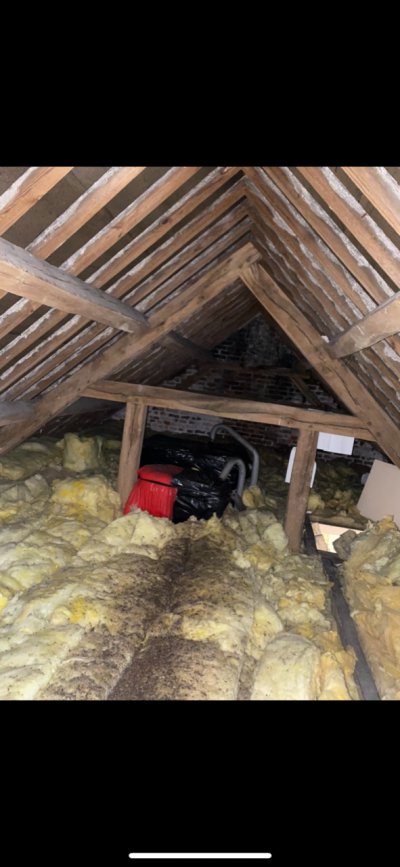Hello All,
Thought I would post about some recent works in my loft. I recently noticed a few of the top floor ceilings were sagging in specific spots & some signs of woodworm showing in our recently purchased property. After inspection of the loft space it was clear that there were a few issues:
-Horrible glass insulation, which is completely insufficient in places (Depth)
-The smell is also very strong due to a wide range of faeces throughout the loft space.
-The roof appears to have been re-felted/slated in the past 30/40 years. And all the old lime mortar, along with anything and everything is buried under the insulation. In some areas you can't actually see the joists and this correlates with issues in the underneath rooms.
-There is also woodworm everywhere. But I suppose particularly the lath (in the centre run) & all of the rafters.
I will get some more pictures of the progress updated too. And currently pricing up some thermafleece.
What would everyone's recommendation be with the woodworm. Treat? Or would removal of the issue and installation of the correct product rectify the problem?
Thanks
Phil


Thought I would post about some recent works in my loft. I recently noticed a few of the top floor ceilings were sagging in specific spots & some signs of woodworm showing in our recently purchased property. After inspection of the loft space it was clear that there were a few issues:
-Horrible glass insulation, which is completely insufficient in places (Depth)
-The smell is also very strong due to a wide range of faeces throughout the loft space.
-The roof appears to have been re-felted/slated in the past 30/40 years. And all the old lime mortar, along with anything and everything is buried under the insulation. In some areas you can't actually see the joists and this correlates with issues in the underneath rooms.
-There is also woodworm everywhere. But I suppose particularly the lath (in the centre run) & all of the rafters.
I will get some more pictures of the progress updated too. And currently pricing up some thermafleece.
What would everyone's recommendation be with the woodworm. Treat? Or would removal of the issue and installation of the correct product rectify the problem?
Thanks
Phil


